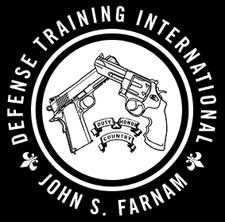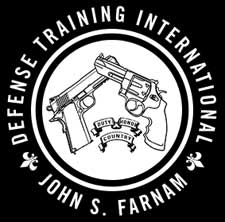We all advise anyone who acquires a gun for self preservation to "get training"--that is, learn to use it.
We know that there are other things to defensive education and training--the law, tactics, recognizing danger, and so on.
It is important to emphasize also that basic gun handling and shooting skills, while an essential first step, do not equate to effective defensive shooting skills. The defensive shooter will have to present their firearm quickly, may need to shoot from a stance unlike what we see at the range, fire more quickly at a moving target that is likely well inside of our seven yard distance at the range, and shoot a whole lot more rapidly than one does whan "going shooting".
The defender will have to get their shots into a loosely defined body area quickly, and will not be concerned about group size.
One other important thing: at the range, we can see the targe, we face it, we have a clear field of fire, we have a backstop, and no one will step in front of the firing line. When we must employ deadly force on a parking lot or at the charging station, none of that is set up for us. We have to detect and identify the target. Compliance with a much more complex application of Rule 4 is entirely up to us.
Basic firearms training must come first, but it cannot prepare the trainee for what they would have to do in that scary moment when the balloon goes up.
The shooting parts of all of this--turning, drawinf while moving off line, shooting--would ideally be conducted with live fire, but that may not be practical for everything, and dry fire or Airsoft can be used.
Also, some purely mental exercises can be brought to bear--might somene be lurking behind that dumpster, if I had to shoot in that direction what would be my backstop, does that fellow look out of place.... On can do that anywhere, all the time.
We know that there are other things to defensive education and training--the law, tactics, recognizing danger, and so on.
It is important to emphasize also that basic gun handling and shooting skills, while an essential first step, do not equate to effective defensive shooting skills. The defensive shooter will have to present their firearm quickly, may need to shoot from a stance unlike what we see at the range, fire more quickly at a moving target that is likely well inside of our seven yard distance at the range, and shoot a whole lot more rapidly than one does whan "going shooting".
The defender will have to get their shots into a loosely defined body area quickly, and will not be concerned about group size.
One other important thing: at the range, we can see the targe, we face it, we have a clear field of fire, we have a backstop, and no one will step in front of the firing line. When we must employ deadly force on a parking lot or at the charging station, none of that is set up for us. We have to detect and identify the target. Compliance with a much more complex application of Rule 4 is entirely up to us.
Basic firearms training must come first, but it cannot prepare the trainee for what they would have to do in that scary moment when the balloon goes up.
The shooting parts of all of this--turning, drawinf while moving off line, shooting--would ideally be conducted with live fire, but that may not be practical for everything, and dry fire or Airsoft can be used.
Also, some purely mental exercises can be brought to bear--might somene be lurking behind that dumpster, if I had to shoot in that direction what would be my backstop, does that fellow look out of place.... On can do that anywhere, all the time.



